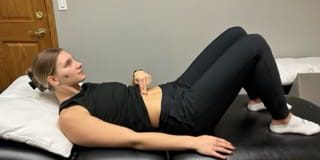The Blog

Balance To Keep Your “Feet On the Ground”
How Physical Therapy Can Help You Improve Your Balance? Balance is the ability to maintain your body’s center of gravity over its base of support. It is essential for performing everyday activities, such as walking, climbing stairs, or reaching for objects. Balance also helps you prevent falls and injuries, especially as you age. Fortunately, physical […]

Arthritis Management: Calm the Inflammation
Arthritis is a disease that causes damage to joints, most commonly found in hands, knees, hips, shoulders, or low back. Arthritis can be caused by normal wear and tear on the body that manifests with age or can be the result of previous trauma to a joint. Around 50% of people over the age of […]

Effects of Cancer Treatment on Your Pelvic Floor
As medicine has continued to improve, survival rates following gynecological cancers have also increased. This is all around a GOOD thing! However, it has brought to light the importance of looking at an individual’s quality of life AFTER the cancer is gone as the struggle often doesn’t stop there. When it comes to gynecological cancers, […]

CranioSacral Therapy offers Clarity for your Nervous System
Cerebrospinal fluid (CSF) is a clear, colorless body fluid found within the tissue that surrounds the brain and spinal cord. It bathes, nourishes, and takes away waste products and dead cells from the brain. CSF also acts as a shock absorber, cushion, or buffer, providing basic mechanical and immunological protection to the brain inside the […]

Sex After Menopause
Understand the importance of pelvic health and potential solutions for managing these challenges.

Apex Offers Pelvic Care for Transgender Individuals
Apex stands for compassionate, inclusive healthcare for all, including transgender and gender non-conforming individuals.

Motion is Lotion: 5 Ways to Improve Low Back Pain
Explore the essential aspects of keeping your lower back healthy as you age.

Restoring Your Core After Baby!
Step by step method to check for Diastasis Recti and the importance of restoring your core after childbirth.




